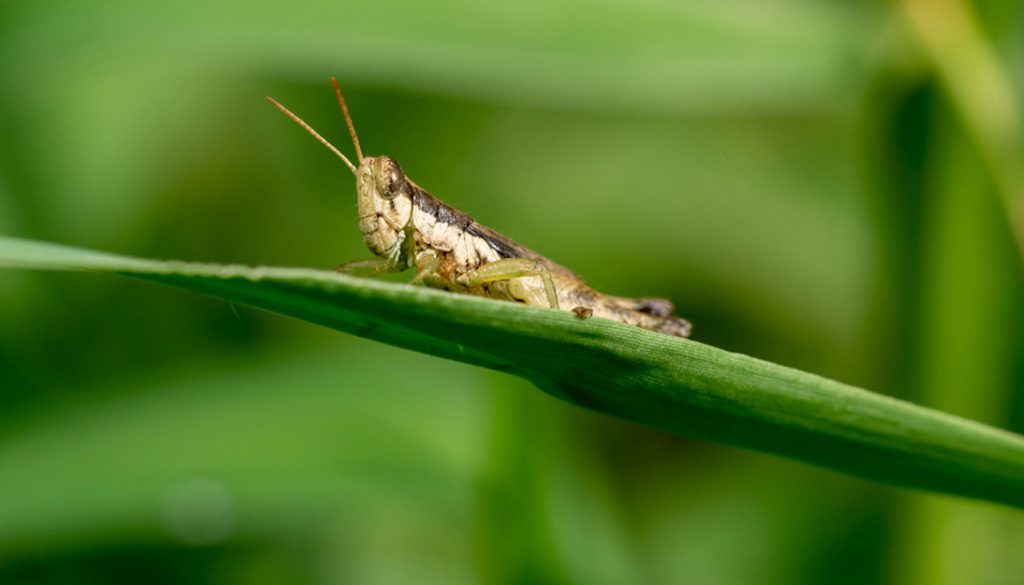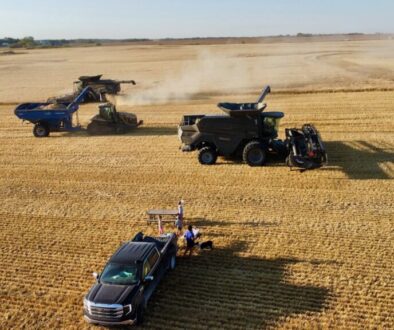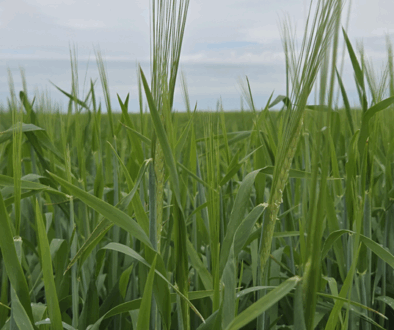Late Season Grasshopper Control
By: Mitchell Japp, MSc, PAg
Grasshoppers! As if drought wasn’t enough. Grasshoppers are clearly a problem earlier in the growing season, but what about as the crop matures? Do they pose a yield or quality risk? Can late season control influence grasshopper populations next year? When is it too late to apply insecticide?
The last question is the first that needs answering as crops approach maturity. The pre-harvest interval (PHI) is paramount when considering a late season insecticide application. There is no tolerance for failing to follow a PHI. The PHI is the minimum time between the last application of a pesticide and swathing/harvesting. The crop must remain standing for the entire PHI. The PHI for pesticides is available in the Guide to Crop Protection and on the label. The PHI can vary widely between products.
The next step when considering control options for grasshoppers is to confirm the grasshoppers are pest species. There are over 80 species of grasshoppers in Saskatchewan and only a handful are pests. A guide to identifying pest species is available online.
Economic thresholds are helpful guides to making insecticide application decisions. However, economic thresholds cannot be used without considering the following:
- Insect developmental stage
- Crop species
- Crop stage
- Current growing conditions
- Control cost
- Market value of the crop
- Pre-harvest interval
The economic threshold for cereals is about 8-12 grasshoppers per square metre. Grasshoppers are damaging beyond the third instar. Normally, control should be conducted at the third instar if they are at damaging densities. Egg hatch occurs over weeks so control when the bulk of the population is at third instar allows emergence and control of a large portion of a local population.
Instars are the periods between moults of nymphal (juvenile) grasshoppers. Most pest grasshoppers in Saskatchewan have five immature stages (instars). Development includes the gradual increase in wing bud size with successive moults. A third instar nymph has the beginnings of wing buds. A grasshopper with wings is an adult. Winged grasshoppers in the spring are not pests.
A booklet called Grasshopper Identification and Control Methods includes description and pictures of the instar stages for some major pest species. The Prairie Pest Monitoring Network sends weekly updates which include development models for the lesser migratory grasshopper. The other pest species have similar development parameters, though the clearwing grasshopper (a grass specialist and important cereal pest, tends to achieve adulthood a little earlier).
Barley is already being harvested in many areas. Even in late-seeded areas in eastern Saskatchewan the barley will be maturing. Although the third to fifth instars are typically considered most damaging, adult grasshoppers do continue to feed and can cause significant damage. Currently, populations are dominated by two-stripe grasshoppers and lesser migratory grasshoppers are starting to appear. Few significant populations of clearwing grasshopper have been reported this year.
Two-stripe grasshopper normally prefers lush foliage but will consume grasses; these have been reported to have some preference for cereal heads. Grasshoppers can clip heads, consume the grain, or partially consume grain – reducing both yield and quality. Grasshopper feeding on foliage as the crop is maturing (past hard dough) does not cause yield loss. Watch for grasshoppers on or near the heads that are actually feeding.
The warm, humid conditions we have been experiencing lately are ideal for fungal disease development on the grasshoppers. One pathogen in particular, Entomopthora grylii, compels grasshoppers to climb plants, grasp the tops and die. Once dead, fungal spores rain down on the rest of the local population. Pathogens can have a strong regulating effect on grasshopper populations.
If an insecticide application is feasible, avoid reliance on Group 3 synthetic pyrethroids at this time of year. They are not as effective on adults and are not recommended for application when temperatures are above 25 C.
Grasshoppers are numerous and mobile, so it is not clear if application will affect populations for next year. There are historical accounts of late season tillage reducing local populations, but this strategy is not feasible in many circumstances. As long as they are healthy, they will continue to lay eggs until the next hard frost. Humid conditions, as we are currently experiencing, will lead to increased fungal infection in grasshoppers. They have lots of natural enemies, including field crickets, blister beetle larvae, as well as vertebrates like ground squirrels, and more. Insecticide application may negatively affect the populations of grasshopper predators.
References and other resources:
- Understanding Preharvest Intervals for Pesticides
- Guide to Crop Protection
- Grasshoppers in Saskatchewan
- Grasshopper Identification and Control Methods
- Prairie Pest Monitoring Network





